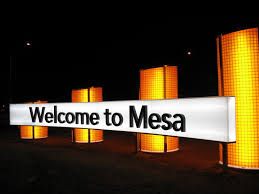The Affordable Care Act – Post 7
So this week I’m taking a brief turn a little bit away from my main topic to focus more on the Affordable Care Act. Obviously having appropriate health care can support anyone in achieving more physical activity and the basic idea behind the act is to put patient more in charge of their health (U.S. Department of Health and Human Services [HHS], 2015). For a patient to really become physically active the patient has to take responsibility for their health. All the walking paths and bike lanes in the world will not create healthy people. People have to choose to use the paths and lanes.
So first the basics of what the law is supposed to do for us (from HHS website about the law).
Coverage
- Ends Pre-Existing Condition Exclusions for Children
- Keeps Young Adults Covered
- Ends Arbitrary Withdrawals of Insurance Coverage
- Guarantees Your Right to Appeal
Costs
- Ends Lifetime Limits on Coverage
- Reviews Premium Increases
- Helps You Get the Most from Your Premium Dollars
Care
- Covers Preventive Care at No Cost to You
- Protects Your Choice of Doctors
- Removes Insurance Company Barriers to Emergency Services
My family and I are currently covered by a plan that we got through the Affordable Care Act, or Obamacare. I’m quite satisfied with it at this point. We enrolled through Healthcare.gov on the open marketplace and found a plan that was appropriate for us at this time. The coverage is better than our previous plan and the cost is less. For me the lack of cost for well checks and preventative care is awesome. Previously taking my daughters to a well child check would cost a copay of $25 for each girl ($75 for just a well child check). Now the well child checks are actually free. I am satisfied with the care we’re getting.
I have not addressed the most controversial part of the plan referred to as minimum essential coverage (Centers for Medicare and Medicaid Services [CMS], 2015). This is the part of the law that requires coverage for particular individuals or fines have to be paid (CMS, 2015). The outcry against this is mostly about freedom being taken away and losses that small businesses might have because of the requirement. I can understand both sides of the argument. In a perfect world everyone would have health insurance and not be required to buy insurance. This is not a perfect world.
The Affordable Care Act was signed into law in 2010 and has been slowly rolled out with the open enrollment in the Health Insurance Marketplace beginning in October 2013 (HHS, 2015). But how did we get here. The implementation of the Affordable Care Act can be instructive for the implementation of any new law or policy.
The idea for the Affordable Care Act was actually taken from a similar reform done in Massachusetts. David Simas, a whitehouse staff member, stated, “The state’s progressive vision of universal coverage and the conservative idea of market competition are what formed the blueprint for Obamacare: that everyone should have access to quality, affordable health care, and no one should ever go broke just because they get sick” (2013). President Obama first began to address this kind of reform in the 2008 campaign. He presented a plan very similar to the system in Massachusetts (The Commonwealth Fund, 2008). With Obama’s election and democrats taking the majority in both the House and Senate the democrats could work on passing health care reform. Both parties acknowledged that reform was necessary but of course disagreed on how it should take place.
The Obama administration felt that they had to work on healthcare reform quickly and began working in the first year of the administration (Frontline, 2010). He quickly got major democratic senators and congressmen on board and the Finance Committee formed a bill based around the Massachusetts system already in place (Frontline, 2010). Throughout the year the President attempted to get bipartisan support for the bill in the Senate and the House (Frontline, 2010). In the end the bills were passed in both the House and the Senate with no Republican voting for the bill (Frontline, 2010).
So is the act working? A recent New York Times article basically said yes. Read the article here.
I’m probably biased on this issue. I think that everyone should have healthcare. I get my insurance through the Affordable Care Act and really it is in my interest to have more patients with insurance. That’s more patients for me to be paid to see.
Passing this reform took a lot. Pretty much everyone in America had to agree that the current healthcare system was not working well. Then it was still impossible to get agreement on how to fix it. In the end Obama said that the Democrats would just pass the bill without the Republicans and that’s what they did (Frontline, 2010). Hopefully getting people to agree on supporting physical activity won’t be so hard.
References
Centers for Medicare and Medicaid Services (2015). Health insurance market reforms. Retrieved from http://www.cms.gov/CCIIO/Programs-and-Initiatives/Health-Insurance-Market-Reforms/index.html
Frontline (2010). Obama’s deal: Chronology. Retrieved from http://www.pbs.org/wgbh/pages/frontline/obamasdeal/etc/cron.html
U.S. Department of Health and Human Services (2015). About the law. Retrieved from http://www.hhs.gov/healthcare/rights/
Simas, D. (30, October 2013). Why we passed the Affordable Care Act in the first place. Retrieved from http://www.whitehouse.gov/blog/2013/10/30/i-know-game-6-starts-soon
The Commonwealth Fund (2008). The 2008 Presidential Candidates’ Health Reform Proposals: Choices for America. Retrieved from http://www.commonwealthfund.org/publications/fund-reports/2008/oct/the-2008-presidential-candidates-health-reform-proposals–choices-for-america

